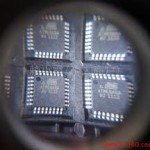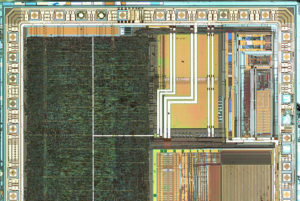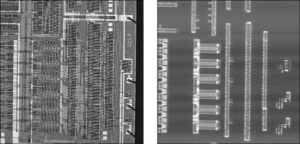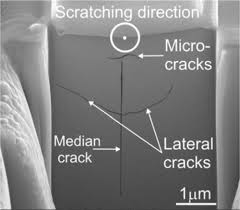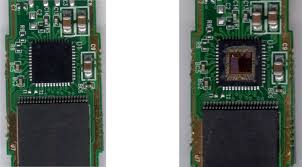Unlock Microcontroller ATmega88PA Eeprom
Unlock Microcontroller ATmega88PA Eeprom protection by cut off its security fuse bit through focus ion beam which is the mostly commonly used technique for MCU breaking;
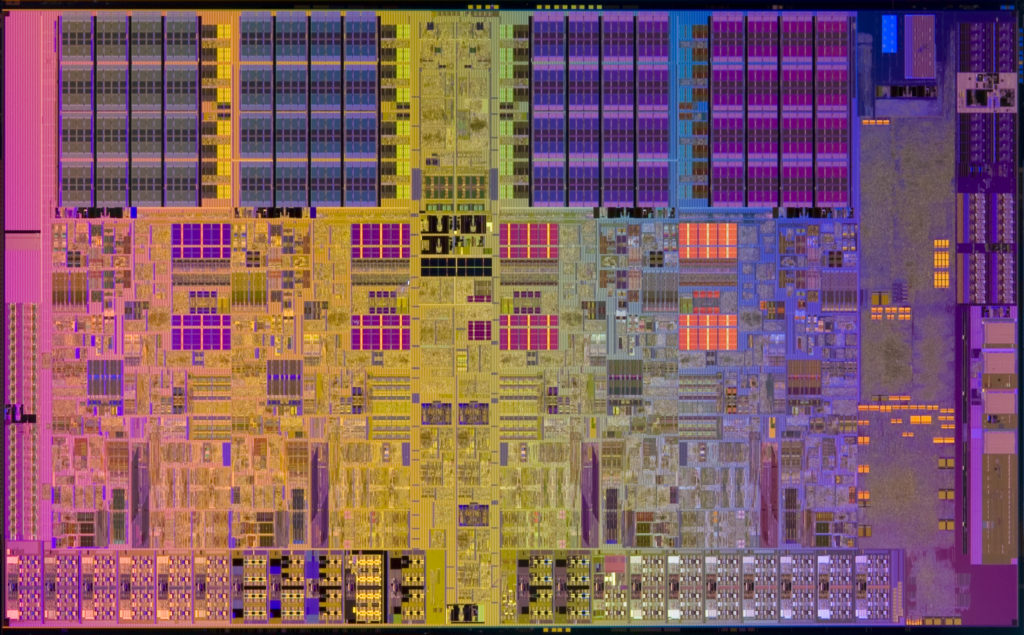
When writing serial data to the ATtiny15L, data is clocked on the rising edge of SCK. When reading data from the ATtiny15L, data is clocked on the falling edge of SCK. See Figure 34, Figure 35, and Table 28 for timing details.
To program and verify the ATtiny15L in the Serial Programming mode, the following sequence is recommended (See 4-byte instruction formats in Table 27):
- Power-up sequence:
Apply power between VCC and GND while RESET and SCK are set to “0 ”. If the programmer cannot guarantee that SCK is held low during Power-up, RESET must be given a positive pulse of at least two MCU cycles duration after SCK has been set to “0”.
- Wait for at least 20 ms and enable serial programming by sending the Programming Enable serial instruction to the MOSI (PB0) pin. Refer to the above section for minimum low and high periods for the serial clock input SCK before crack mcu atmega1280a heximal eeprom.
- The serial programming instructions will not work if the communication is out of synchronization. When in sync, the second byte ($53) will echo back when issuing the third byte of the Programming Enable instruction.
- Whether the echo is correct or not, all four bytes of the instruction must be transmitted. If the $53 did not echo back, give SCK a positive pulse and issue a new Programming Enable instruction. If the $53 is not seen within 32 attempts, there is no functional device connected when crack microcontroller atmega48p heximal.
- If a Chip Erase is performed (must be done to erase the Flash), wait tWD_ERASE after the instruction, give RESET a positive pulse, and start over from step 2. See Table 29 on page 63 for tWD_ERASE value.
- The Flash or EEPROM array is programmed one byte at a time by supplying the address and data together with the appropriate write instruction. An EEPROM memory location is first automatically erased before new data is written. Use data polling to detect when the next byte in the Flash or EEPROM can be written.
If polling is not used, wait tWD_PROG_FL or tWD_PROG_EE, respectively, before transmitting the next instruction. See Table 30 on page 63 for the tWD_PROG_FL and tWD_PROG_EE values. In an erased device, no $FFs in the data file(s) need to be programmed.
- Any memory location can be verified by using the Read instruction, which returns the content at the selected address at the serial output MISO (PB1) pin.
- At the end of the programming session, RESET can be set high to commence normal operation.
- Power-off sequence (if needed):
Set RESET to “1”.
Turn VCC power off.
Tags: unlock microcontroller binary archive,unlock microcontroller binary code,unlock microcontroller binary content,unlock microcontroller binary data,unlock microcontroller binary eeprom,unlock microcontroller binary file,unlock microcontroller binary firmware,unlock microcontroller binary information,unlock microcontroller binary memory,unlock microcontroller binary program,unlock microcontroller binary software


